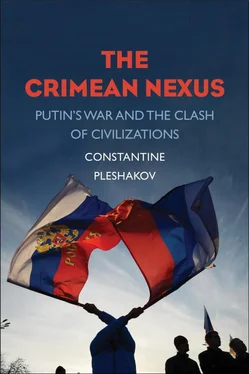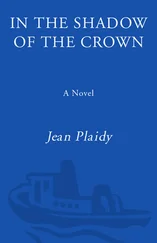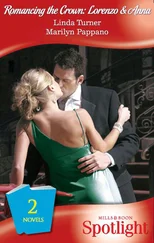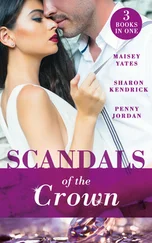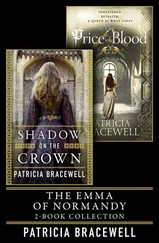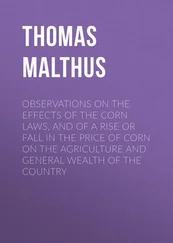Only a totalitarian state could close coasts that porous. In the USSR, Crimea acquired a new quality—that of a frontier, tantalizingly close to “abroad.” The coast became the Black Sea equivalent of the Berlin Wall, from which one occasionally might spot NATO warships teasing the Soviets from the safety of international waters.
Crimea was among the oldest civilizations Russia conquered. The first time Moscow is mentioned in a chronicle is 1147; by then, the Crimean town of Feodosia was fifteen centuries old. To Russians, the cradle of their civilization lies in the eastern Mediterranean—Greece, Palestine, Asia Minor—lands of antiquity and early Christianity. Crimea was the bridge to all that. The prince of the Kievan Rus’ who would “baptize” Russia, Vladimir, converted to Orthodox Christianity in Chersonesus, now a suburb of Sevastopol. After Greek myths reached the Russians during the Enlightenment, they were delighted to discover that Crimea and the adjoining Black Sea coasts figure prominently in the stories of Iphigeneia, the Argonauts, and Achilles. Even before setting foot in Crimea, Catherine the Great reimagined the peninsula as a continuation of ancient Greece. That tradition is alive and well two hundred fifty years later. [15] Robert Graves, The Greek Myths (New York: Penguin, 2012), 435–441, 594–598, 675–683.
Pushkin wrote about the green waves of the sea “kissing Taurida,” for good measure throwing in an imaginary sighting of the “demi-goddess” Nereid. But Pushkin lived in the age of Romanticism, and for a Romantic pretty much everything came with a classical allusion. A century later, however, in a very different voice, Osip Mandelshtam called Crimean vineyards “Hellenic art in rocky Taurida” and alluded to “Bacchus rites” (nothing but a euphemism for “binge drinking”). [16] “A Nereid”: Pushkin, Polnoye sobraniye sochinenii , vol. 2, 156; Mandelshtam, “Zolotistogo myoda struia…” (“A string of golden honey…”): Osip Mandelshtam, Polnoye sobranie stikhotvorenii (St. Petersburg: Akademicheskii proekt, 1996), 139.
Unlike Pushkin, Joseph Brodsky was able to emigrate, but before he did, stifled by the state like Pushkin, he sought refuge in Crimea, again like Pushkin, and reimagined it as a Greco-Roman haven. Brodsky comes not to Yalta but to the “shores of Pontus that does not freeze.” He celebrates Christmas in a “tavern”; a random companion in the bar has a “Levantine” face; the bartender circles the room like a “young dolphin”; the steamboats in the harbor are “soiled ichthyosaurs.” [17] Brodsky, “Vtoroye Rozhdestvo…” (“A second Christmas”): Brodsky, Sochineniya , vol. 2, 264; Brodsky, “Zimnim vecherom v Yalte” (“On a winter night in Yalta”): Brodsky, Sochineniya , vol. 2, 141.
Crimea’s exoticism made it an ideal setting for Romantic melodrama. Having visited the khans’ palace, Pushkin wrote a narrative poem, “The Fountain of Bakhchisaray”—a racy story about passion, betrayal, and vengeance in a harem. [18] Pushkin, Polnoye sobraniye sochinenii , vol. 4, 153–176.
The fountain in question is a beautiful mid-eighteenth-century artwork. A cascade carved of white marble belongs to the category of Selsibil , the mythical Islamic wellspring of life. Pushkin renamed it the Fountain of Tears. Since then, the poem has inspired an opera and a ballet, and the bust of Pushkin placed next to the fountain itself in the Bakhchisaray palace could be a perfect cover image for a new edition of Edward Said’s Orientalism .
After “The Fountain of Bakhchisaray,” Crimea became for Russian artists what Egypt and the Levant were to their French and Italian contemporaries. As Said put it, they were reinventing the “Orient” through “ positional superiority, which puts the Westerner in a whole series of possible relationships with the Orient without ever losing him the relative upper hand.” Another Crimea testimony from Vladimir Nabokov: “The whole place seemed completely foreign; the smells were not Russian, the sounds were not Russian, the donkey braying every evening just as the muezzin started to chant from the village minaret (a slim blue tower silhouetted against a peach-colored sky) was positively Baghdadian.” [19] Edward W. Said, Orientalism (New York: Vintage, 1979), 7; Vladimir Nabokov, Speak, Memory (New York: Vintage, 1989), 244.
Almost every major Russian author of the twentieth century contributed to the collective portrayal of Crimea. Aleksandr Kuprin reimagined the sleepy community of Greek fishermen in the village of Balaclava as descendants of giants, the Laestrygonians of Homer’s Odyssey . Aleksandr Grinevsky, a favorite companion of several generations of Soviet young adults, writing under a foreign-sounding pen name, Grin, disguised Crimea as a foreign country in a series of action-packed novellas, of which The Scarlet Sails is the most popular (and the tackiest). Consistently developing an imagined land around the fair cities of Liss and Zurbagan, the series was later affectionately dubbed “Grinland.” The sentimental Konstantin Paustovsky lovingly created a Crimea of abandonment, melancholy, and mystery (unkind reviewers called him delusional for writing about Sevastopol as if it were Marseilles). [20] A. I. Kuprin, Izbrannye sochineniya (Moscow: OLMA-PRESS, 2003), 660–717; Aleksandr Grin, Alye parusa (Moscow: Ripol Klassik, 2011); Konstantin Paustovsky, Povest’ o zhizni (Moscow: Sinergia, 2007).
As late as the 1950s, books were published on contemporary travels in the Crimean mountains on a par with the Caucasus and Central Asia. With the coasts processed and overdeveloped, Russians wanted to know that some parts of the peninsula remained as exotic, wild, and mysterious as the Pamir Mountains. Joseph Brodsky’s narrative poem “Homage to Yalta” is set in the wintery mists of Crimea’s South Shore—as if his home city of St. Petersburg (Leningrad at the time) were not sufficiently gloomy to accommodate a murder story. [21] Shcherbakov, Po goram Kryma , 3–4; Brodsky, “Posvyashchaetsya Yalte” (“Homage to Yalta”): Brodsky, Sochineniya , vol. 2, 142–156.
In the mainland Russian view, the Romantic hero, call him Byronic or demonic, suited Crimea. Look at the narratives woven around the true stories of Crimea at the time of revolution and civil war, 1917–1920.
It happened that in the fall of 1920, Crimea became the last European territory of the former empire to which the Whites still clung. The evacuation of Sevastopol that November was the definitive conclusion of the civil war, ultimate victory for the Reds, ultimate catastrophe for the Whites. Soldiers of the defeated army and civilians of the failed society boarded steamboats in panic, losing track of family and friends, sometimes forever. Horses abandoned by cavalrymen plunged into the sea, following them, apparently also feeling that the separation was final; unable to take the reality of departure, a number of officers shot themselves on deck amid the howling crowds.
Soviet culture treated this exodus with surprising respect. Instead of portraying it as a flight of the low-life scum who got what they richly deserved, Soviet narratives focused on the tragic nature of the human condition—duty, allegiance, and choice—in Vladimir Mayakovsky’s words, “yesterday’s Russians, tomorrow’s refugees.” Even more surprising is the representation of the Whites’ commander-in-chief, Baron Pyotr Wrangel. Typically, in Red vernacular, Wrangel is “the Black Baron”; but not in November 1920 in Sevastopol. In Mayakovsky’s narrative poem, the doomed general is the last to evacuate Sevastopol, as the captain of a perishing ship, and he says his goodbyes to the country he leaves behind kneeling publicly, in the seaport, with bullets whizzing by. [22] “Khorosho!” (“All Right!”): V. V. Mayakovsky, Sobraniye sochinenii v vosmi tomakh (Moscow: Pravda, 1968), vol. 5, 438–439.
Ironically, this grudging admiration comes from the man Stalin called the “best and brightest poet of the Soviet era.”
Читать дальше
